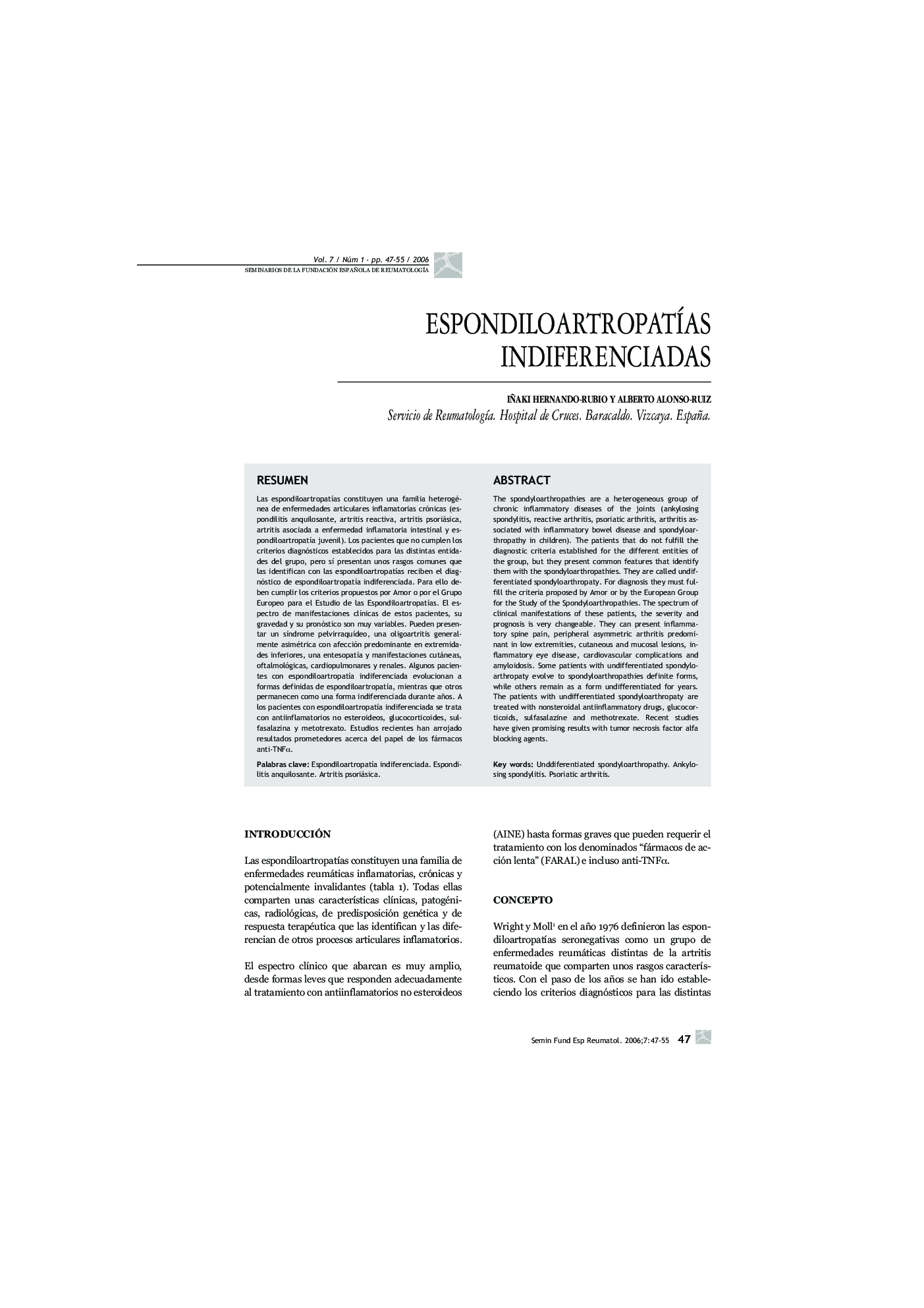| Article ID | Journal | Published Year | Pages | File Type |
|---|---|---|---|---|
| 3391227 | Seminarios de la Fundación Española de Reumatología | 2006 | 9 Pages |
Abstract
The spondyloarthropathies are a heterogeneous group of chronic inflammatory diseases of the joints (ankylosing spondylitis, reactive arthritis, psoriatic arthritis, arthritis associated with inflammatory bowel disease and spondyloarthropathy in children). The patients that do not fulfill the diagnostic criteria established for the different entities of the group, but they present common features that identify them with the spondyloarthropathies. They are called undifferentiated spondyloarthropaty. For diagnosis they must fulfill the criteria proposed by Amor or by the European Group for the Study of the Spondyloarthropathies. The spectrum of clinical manifestations of these patients, the severity and prognosis is very changeable. They can present inflammatory spine pain, peripheral asymmetric arthritis predominant in low extremities, cutaneous and mucosal lesions, inflammatory eye disease, cardiovascular complications and amyloidosis. Some patients with undifferentiated spondyloarthropaty evolve to spondyloarthropathies definite forms, while others remain as a form undifferentiated for years. The patients with undifferentiated spondyloarthropaty are treated with nonsteroidal antiinflammatory drugs, glucocorticoids, sulfasalazine and methotrexate. Recent studies have given promising results with tumor necrosis factor alfa blocking agents.
Related Topics
Health Sciences
Medicine and Dentistry
Immunology, Allergology and Rheumatology
Authors
Iñaki Hernando-Rubio, Alberto Alonso-Ruiz,
